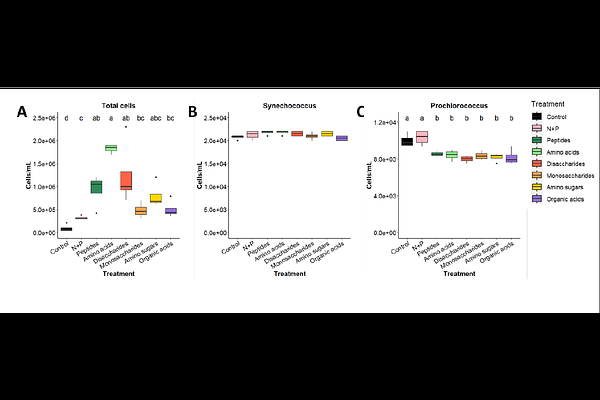Diversity in the Utilization of Different Molecular Classes of Dissolved Organic Matter by Heterotrophic Marine Bacteria

Diversity in the Utilization of Different Molecular Classes of Dissolved Organic Matter by Heterotrophic Marine Bacteria
Givati, S. H.; Forchielli, E. J.; Aharonovich, D.; Barak, N.; Weissberg, O.; Belkin, N.; Rahav, E.; Segre, D.; Sher, D.
AbstractHeterotrophic marine bacteria utilize and recycle dissolved organic matter (DOM), impacting biogeochemical cycles. It is currently unclear to what extent distinct DOM components can be utilized by different heterotrophic clades. Here, we ask how a natural microbial community from the Eastern Mediterranean Sea responds to different molecular classes of DOM. These molecular classes - peptides, amino acids, amino sugars, disaccharides, monosaccharides and organic acids - together comprise much of the biomass of living organisms, released upon their death as DOM. Bulk bacterial activity increased after 24-hours for all treatments relative to the control, while glucose and ATP uptake decreased or remained unchanged. The relative abundance of several bacterial families, assessed using 16S rRNA amplicon sequencing, increased in some treatments: peptides promoted an increase in Pseudoalteromonadaceae, disaccharides promoted both Pseudoalteromonadaceae and Alteromonadaceae, and most other treatments were dominated by Vibrionaceae. While some results were consistent with recent laboratory-based studies, for example Pseudoalteromonadaceae favoring peptides, other clades behaved differently. Alteromonadaceae, for example, grew well in the lab on many substrates but dominated in seawater samples when disaccharides were added. These results highlight the diversity in DOM utilization among heterotrophic bacteria and complexities in the response of natural communities.